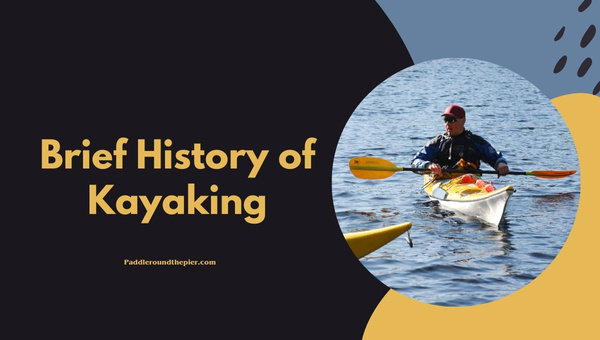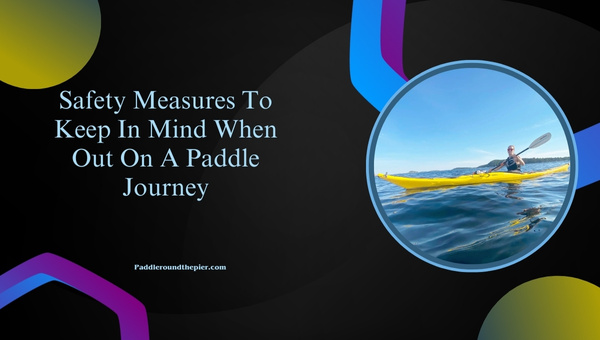Types of Kayaks: Your Ultimate Guide Navigating the Choices
Have you ever found yourself standing agog in a shop, staring at the vast array of kayaks on display, feeling overwhelmed by choice? Taking one look at all those shapes, sizes, and designs makes you realize one stark truth – understanding the types of kayaks is akin to learning a brand new language. But today, we’ll simplify that language for you.
This post is dedicated to making sense of this maritime mayhem. By delving into the different kayak styles and classifications, our goal is to provide an easy-to-grasp framework for all those dazed by the numerous options available. We'll explore what sets these vessels apart from each other, from their exquisite design elements right down to their unique functionalities.
So, What’s in It for You?
- A streamlined run-down on various types of kayaks.
- A user-friendly kayak buying guide.
- An excavated history of kayaking.
- Tips for choosing your perfect match based on personal needs and plans.
- Safety essentials and must-have gears every paddler should be aware of.
Brief History of Kayaking
Before we delve into the various types of kayaks, it's essential to understand where it all began. I've always been fascinated by the deep-rooted history of kayaking, as it offers a glimpse into how remarkably the craft has evolved.

- Inception in Arctic North America: The kayak's story begins with native Inuit tribes located in Arctic North America approximately 4000 years ago. These innovative people designed the first kayaks out of driftwood or whale skeletons, wrapping them in stitched-together animal skins for their hunting expeditions in icy waters.
- Kayak's Name Origin: Here’s an interesting tidbit – did you know that 'kayak' translates to 'hunter's boat'? Its purpose as a vessel for survival is embedded right there in its name!
- European Discovery and Sport Introduction: Fast forward to the 1800s - European explorers are introduced to these practical vessels and bring them back home. This step led to an unexpected twist for kayaking as wooden-framed kayaks covered with canvas became popular recreational options by the early 1900s. Not long after, around 1936, kayak contests became a part of the Olympics.
- Modern Transformation: Today's kayaks have seen contemporary transformations, creating multitudes of different kayak styles and classifications compared to those early driftwood designs primarily used for hunting.
Throughout this evolution, one thing remains constant: the natural bond between humans and water that this craft symbolizes. Regardless of whether you're paddling a state-of-the-art touring kayak across shimmering coastlines or navigating through whitewater challenges in a hard-shell model, you're participating in a time-honored tradition that connects us with our adventurous past.
Also Read: Inflatable Flamingo: Understanding the Popularity
Knowing the Types of Kayaks
You'd be astounded at how different types of kayaks can make or break your escapade on the water. Each kayak type offers something unique, just like we adventurers do! Let's dive deep into this world and get to know these aquatic vehicles a bit better.
Recreational Kayaks
Recreational kayaks are good old pals for many outdoor enthusiasts. They're comfy and stable and come with enough storage compartments for that quick sandwich you want to munch on while floating seamlessly down a restful river.
- Ideal for: Lakes, ponds, slow-moving rivers
- Core characteristics: Wide beam for stability, large cockpit for easy entry and exit
- Best use case: Casual paddling and nature watching
Touring Kayaks
Eager about embarking on a long-distance journey? Look no further than touring kayaks. These watercraft are all about speed and easy navigation in various conditions.
- Ideal for: Large bodies of water, including open sea areas
- Core characteristics: Long length (usually beyond 12 feet), plenty of storage space within watertight compartments
- Best use case: Extended trips across varied water conditions
Sea Kayaks
Sophisticated adventurers would love the challenge offered by Sea Kayaks. Handling rough seas is their hallmark!
- Ideal for: Large lakes and coastal waters with use in expeditions being common
- Core Characteristics: Higher bow and stern to handle waves easily; significant storage space.
- Best Use Case: Journeying through changing sea environments.
Inflatable Kayaks
Inflatable kayaks – perform surprisingly well giving tough competition to their hardshell counterparts! Their portability is remarkable too.
- Ideal For: Mild river running or flatwater paddling
- Core Characteristics: Super lightweight; high buoyancy; ease of transport & storability
- Best Use Case: Traveling or when storage and transport capacity is limited
Sit-On-Top Kayaks
Unique in design, sit-on-top kayaks are hard to miss! They’re your friendly neighborhood kayak for sun-soaked beach adventures.
- Ideal For: Warm climates, fishing, surfing and diving
- Core Characteristics: Maximum stability; Easy to climb back on if overturned
- Best Use Case: Recreational paddle at any shoreline or harbor
Whitewater Kayas
Battling through frothy rapids is exactly what whitewater kayas do!
- Ideal For: River running (especially under Class I to V rapids)
- Core Characteristics: Short length; high rocker profile for agility;
- Best Use Case: Rapid shooting, river play
Fishing Kayak
From the passionate weekend angler to the seasoned fish finder – fishing kayaks are making waves.
- Ideal for: Angling enthusiasts seeking a relaxed floating trip
- Core characteristics: High stability; ample storage space; often comes with rod holders
- Best use case: Fishing in freshwater or saltwater environments
Tandem Kayak
If tandem cycling didn't get you and your partner aligned well enough, try tandem kayaking!
- Ideal For: Couples or parent-child out for a fun outing on water
- Core Characteristics: Space enough for two paddlers with sync needed to steer it right
- Best Use Case: Recreational tour in tranquil waters
Just knowing these eight major types of kayaks isn't nearly enough. There's an array of thirteen more distinct varieties awaiting you - each promising a different kind of thrill. But remember – the key to experiencing joy on the water is picking the one that suits you the best. So, paddle up and choose wisely!
Also Read: The Ultimate Guide to Paddle Board Transport: Do it Right!
Essential Tips For Choosing the Right Type Of Kayak
Choosing the right type of kayak can feel like a daunting task, especially with so many varieties available. Let's break it down into manageable segments to make your decision-making process clearer and more straightforward.
- Define your purpose: This boils down to what you intend to do with the kayak. Will you be paddling tranquil ponds, tackling white water rapids, or facing ocean waves? Different types of kayaks are designed for different environments.
- Consider your experience level: As a beginner, stability might be top on your list, while speed and maneuverability might become more important as you progress.
- Size matters: The size of a kayak affects its performance. Longer kayaks are faster but less maneuverable than shorter ones.
- Weight capacity: Don’t forget about how much weight you will carry in terms of gear for activities such as fishing or camping trips that would influence the choice of a kayak type.
Now, let's delve into specific types of kayaks:
- Recreational Kayaks: These are great for beginners due to their wide beam, which provides stability and ease during calm, short-distance paddles in lakes or slow-moving waters.
- Sea Kayaks: They excel at long-distance travel, making them perfect for experienced paddlers who take on large bodies of water.
- Inflatable Kayaks: If portability is paramount to you, this is definitely worth considering, given their easy storage options.
- Whitewater Kayaks: Your best bet if adrenaline-coursing rapids tickle your fancy, but bear in mind these require higher skills to navigate safely.
- Sit-On-Top Kayaks: Freedoms come with this type; falling off isn’t a big deal because they’re easy to climb back onto!
Safety Measures To Keep In Mind When Out On A Paddle Journey
Before we dive into the exciting variety of kayak styles, there's one crucial aspect to consider - safety on your paddling journey. Just like every other outdoor activity, kayaking is not without its risks.

However, with the right safety measures in place, you can keep those risks to a bare minimum. I'll guide you through some critical items and tips that should be on your checklist to ensure a safe kayaking trip.
- Life Vests: You may call it a life vest, PFD (Personal Flotation Device), or life jacket. Regardless of what you name it, this piece of equipment is indispensable on all types of kayaks and environments - be it serene lakes or tumultuous white waters.
- Make sure that your life vest is U.S Coast Guard-approved
- It's essential for the PFD to fit correctly; it should feel snug yet not limit movement
- Avoid using inflatable life vests, as they are less reliable during an impactful flip
- First Aid Kit: You never know when minor accidents may strike in the middle of your kayaking adventure. Being prepared for such eventualities can make all the difference.
- Your kit should include band-aids, sting treatment pads, antibacterial cream, and gauze pads at the very least.
- Include signaling equipment like whistles and flares.
- Pack meds for allergies or other pre-existing medical conditions
Having basic training in first aid practices can come in handy in tricky situations.
- Helmet: Especially necessary if you're planning to traverse fast-moving rivers with scattered debris known as white-water regions. A helmet will protect against possible head injuries caused by accidental tipping or bumping.
- Dress For The Water, Not For The Weather: Yes! You read that right. It's more important to dress for the water temperature rather than the weather on the day. Even if you capsize, you don't want to risk hypothermia.
Other Safety Tips:
- Never go kayaking alone. It’s always better to be two or more paddlers.
- Know your physical limitations and swim level before embarking on a paddle journey.
- Take some time to learn about the place where you plan to kayak, including its currents, tides, and other water conditions.
Conclusion
Having explored the wide variety of kayak types, it's clear that each is tailored with a specific environment and purpose in mind. From leisurely afternoon paddles on serene lakes to high-adrenaline whitewater adventures, each kayak style offers unique characteristics that cater to diverse needs and skills.
The key takeaway is understanding your personal goals, proficiency level, and the intended paddling conditions when choosing a kayak type. That knowledge ensures not only enjoyment on the water but also safety.
Key Takeaway Points
- Understanding different types of kayaks helps meet individual paddling goals effectively.
- Each type suits certain bodies of water better than others.
- Safety equipment must always accompany your paddle journey, no matter the type of kayak you choose.
